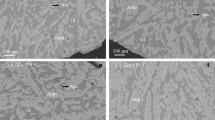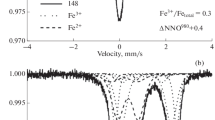Abstract
The effects of pressure and oxygen fugacity (fO2) on trace element partitioning between pargasitic amphibole and alkali-basaltic melts have been determined at pressures from 1.5 to 2.5 GPa and oxygen fugacities at 2 log units above and below the nickel–nickel oxide buffer. Amphibole crystallization experiments were performed in a piston cylinder apparatus and partition coefficients between amphibole and quenched melt of large-ion-lithophile elements (LILE: Rb, Sr, Ba), high-field-strength elements (HFSE: Zr, Nb, Ta, Hf, U, Th) and rare-earth elements (REE: La to Lu; +Y) were measured with a LASER ablation inductively coupled plasma – mass spectrometer. Increasing pressure from 1.5 to 2.5 GPa at similar temperatures and approximately constant fO2 increases D Rb but decreases D Zr and D Hf and D REE (D La, D Ce, D Pr). An empirical relationship was observed between D Zr and (Ti/Al)M2 in the amphibole, which can be described by:
Increasing the fO2 by ∼4 log units (∼NNO–2.0 to ∼NNO+2.2) at similar temperatures and constant pressure increases D Ba and D Nd but decreases D Ti. An increase in pressure or fO2 decreases the maximum partition coefficient (D o ), the Young's modulus (E) and the optimum ionic radius (r o ) of the A-, M2- and M4-lattice sites. The calculated r o values from the monovalent cations (Na, K, Rb) in the A site and the quadrivalent cations (Ti, Hf, Zr) in the M2 lattice sites suggests that amphiboles crystallized from alkaline basalt material have smaller 〈A-O〉 and 〈M2-O〉, mean bond-lengths than those formed from pargasitic materials at identical pressures and fO2's. The measured partition coefficients were used to calculate trace element concentrations in melts formed by partial melting of amphibole-bearing peridotite. This modeling demonstrates those changes in either the pressure or fO2 of melting can exert a significant effect on Rb/HFSE ratios in the melts and thus help explain the wide variations of these ratios sometimes observed in basaltic rock suites.
Similar content being viewed by others
Author information
Authors and Affiliations
Additional information
Received: 7 August 1998 / Accepted: 7 June 2000
Rights and permissions
About this article
Cite this article
Dalpé, C., Baker, D. Experimental investigation of large-ion-lithophile-element-, high-field-strength-element- and rare-earth-element-partitioning between calcic amphibole and basaltic melt: the effects of pressure and oxygen fugacity. Contrib Mineral Petrol 140, 233–250 (2000). https://doi.org/10.1007/s004100000181
Issue Date:
DOI: https://doi.org/10.1007/s004100000181




